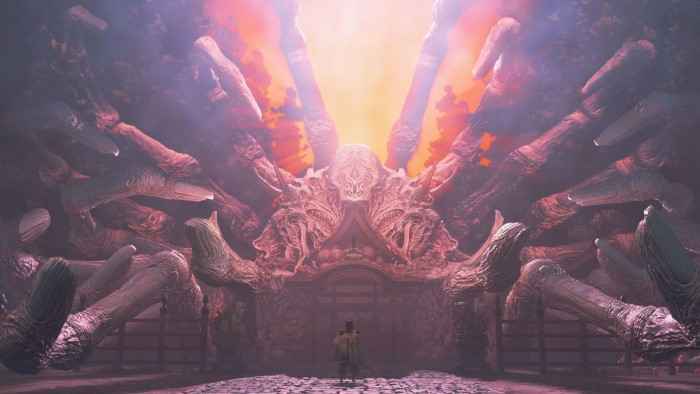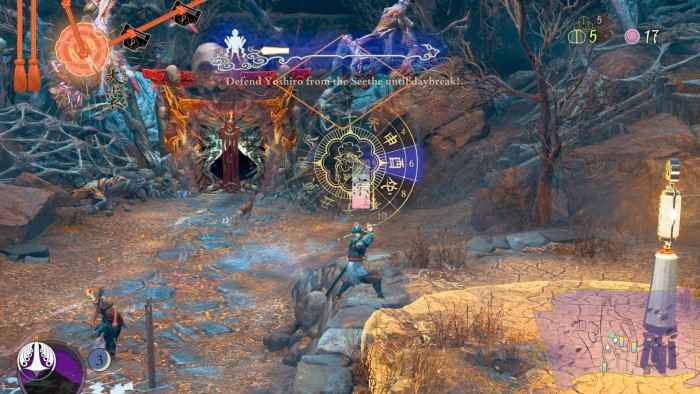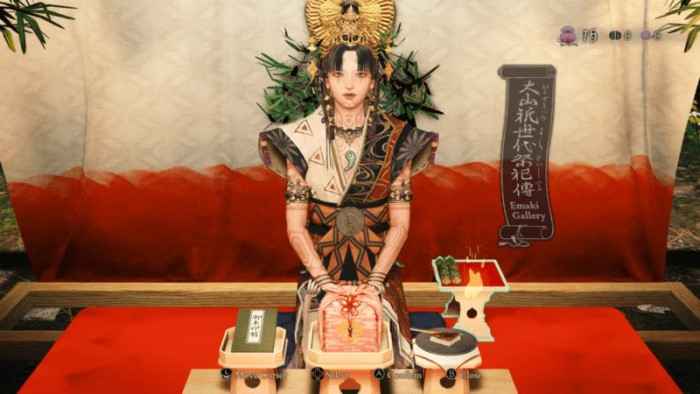Kunitsu-Gami: Path of the Goddess Review
Kunitsu-Gami: Path of the Goddess is a brand new game by Capcom, that isn’t related to any of its massive franchises. It’s a third person hack and slash action game, mixed with a tower defense game. But all the prerelease advertising made it look like a medieval Japanese horror game, similar to Onimusha. Kunitsu-Gami is a game that reminds me of PS2-era Capcom, when the company was bursting with creative games like Okami, God Hand, and Viewtiful Joe. I love that a major studio is willing to take risks like Kunitsu-Gami: Path of the Goddess, and in this case, those risks definitely paid off.
The first thing anyone will notice about Kunitsu-Gami: Path of the Goddess is its visual style. Upon first glace, the game looks like a medieval Japanese game, but a lot of the design has aspects of South East Asian influence. The horror elements get into Weird territory, with fungal growth everywhere, and portals made of fingers. Right from the get go, Kunitsu-Gami: Path of the Goddess shows that it’s full of creative ideas.
World-Build Before Narrative
Kunitsu-Gami: Path of the Goddess’ narrative isn’t as important as its world build. The story is that demons, called Seethe, are attacking a bunch of mountainside villages. They’ve stolen special masks from the villages and corrupt the land. The player takes on the role of Soh, a spirit samurai that’s protecting a priestess named Yoshiro, who has the power to remove the corrupt demon growth. The two must go to the villages, free them of the demon corruption, and get the villages’ masks back. Once the player has all the masks, they can open a gate at the mountain summit, and fight the source of the demons.

The plot is a vehicle for the gameplay. Yoshiro has to walk through every village, in order to purify it. Soh needs to carve a path through each village from where they enter, to the gate that the Seethe will come out of. When Yoshiro gets to the gate, she seals it. But if she can’t reach the gate before night, the Seethe attack, and Yoshiro has to be defended. Kunitsu-Gami: Path of the Goddess has a day/ night cycle, where the time is constantly ticking towards night, which is when monsters attack.
Purging Defilement
During the day, the player wanders around an area “purging defilement”. This means finding parts of the village that are corrupted with demon growth, and holding a button to chase the growth away. Doing this frees villagers, and gives the player points to assign. When a villager is rescued, they can be assigned a role, such as woodcutter (short range melee attacker), archer (long range melee attacker), etc. Each role has different abilities that can be upgraded for a cost. There are rewards for finding and purging all the areas of defilement in a village, such as stat boosting accessories.

When the Seethe attack, Kunitsu-Gami: Path of the Goddess’ combat begins. Soh has very basic hack and slash controls. There are buttons for quick attack, strong attack (called dance attack), jump, block, dodge, and a special attack. The game made the weird decision to make the default dodge button L3. Thankfully the controls can be changed. One interesting aspect of combat was that when Soh dies, they turn into an ability-less spirit. The spirit will turn back into Soh after a short amount of time, and level failure actually happens when Yoshiro is killed. Overall, Kunitsu-Gami’s gameplay becomes much more unique when the tower defense elements are added.
Boss Battle Struggles
I didn’t find boss battles as fun as purifying villages, because the third person combat was so basic. Soh’s strikes are much more deliberate, and it’s easy to get locked into an attack animation. So boss fights feel more Soulslike than Devil May Cry-like. But I didn’t love this, because the boss is constantly moving towards Yoshiro and the villager units defending her. I had a really hard time balancing the deliberate way I needed to approach combat, and the franticness I felt from the time limit. Some players might thrive on this sense of panic, though; it was definitely intended. But I would have preferred faster-paced action. It also didn’t help that the bosses had massive health bars.

Each village has multiple goals, and completion rewards. This adds a lot of replayability to Kunitsu-Gami: Path of the Goddess. Players can relax in villages they’ve cleared. They can repair damage that’s been done by assigning rescued villagers to fix damaged areas. Different unit types can be upgraded. Players can check their extra completion goals, to see if they want to replay levels, in order to earn more experience, and level up units. I loved Kunitsu-Gami: Path of the Goddess’ RPG elements. It was very satisfying to check off goals, collect upgrades, and unlock new units.
Double-A Goodness
Kunitsu-Gami: Path of the Goddess is a lower budget title. Its visuals are constantly interesting, but it looks like a PS3 game. This isn’t an issue for me. I admire Capcom for developing double-A titles. And Kunitsu-Gami: Path of the Goddess is priced accordingly. The music is full of gorgeous orchestrations. There are lots of pretty, light melodies. And when combat kicks it, the score uses lots of a-typical percussion to ramp up the tension. The soundtrack was a joy to listen to.

Before playing Kunitsu-Gami: Path of the Goddess, I was intrigued by a new Capcom IP, but had no desire to play a tower defense game. I ended up being pleasantly surprised with the creative way Capcom fused tower defense with third person action. The combat itself wasn’t a highlight, but the unique way the gameplay was structured really pulled me in. If you’re at all curious about Kunitsu-Gami: Path of the Goddess, definitely give it a try. It completely exceeded my expectations.
***PS5 code provided by the publisher***
The Good
- Hybrid tower defense gameplay
- Visually creative world build
- Lots of replayability
The Bad
- Story is thin
- Combat is very basic
- Graphics are a bit dated

